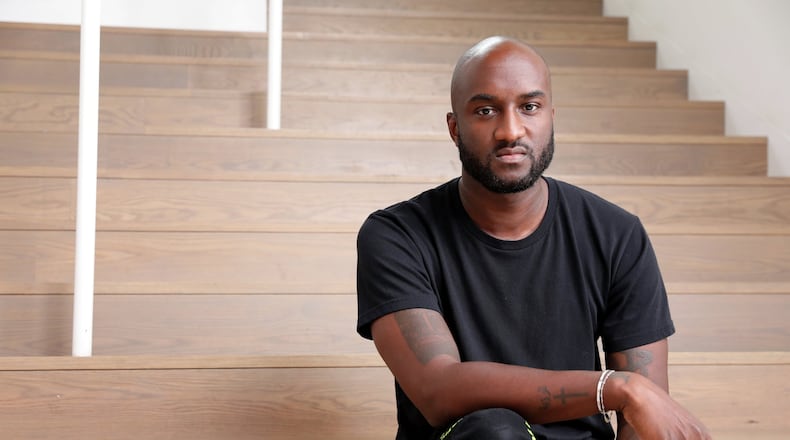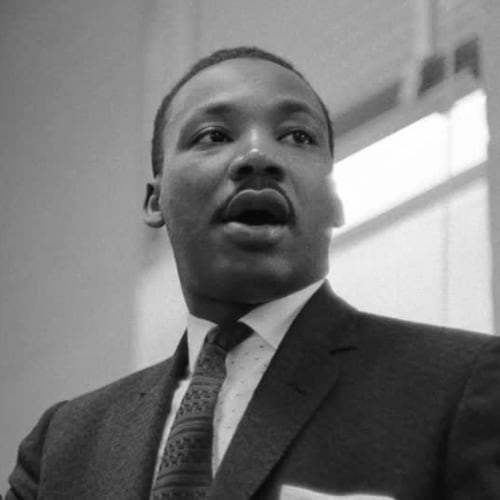Virgil Abloh grew up with his seamstress mother saying, “you don’t buy the clothes, you make the clothes.”
In the early 2000s, hip-hop streetwear was embedded into fashion by Black artists. Baby Phat tracksuits, Sean Jean baggy jeans and blinged-out flip phones were ever-present. Rappers would name-drop luxury brands in their songs, creating advertisements that were just as effective as a billboard in Times Square.
This was the foundation that Abloh had when he changed luxury fashion and the resurgence of hip-hop’s influence on it.
Abloh’s influence on luxury fashion bred a new generation of indie streetwear artists and designers. That is why his sudden death at the age of 41 last November, after a private battle with a rare form of cancer called cardiac angiosarcoma, has left such a void in the fashion world.
Abloh, a fashion designer and artist, was born in Chicago and was raised by Ghanaian immigrant parents. He attended the University of Wisconsin-Madison for civil engineering. According to a Vogue article, he skipped his final critique in 2002 to attend a meeting with Kanye West’s former manager. Soon after, he began to work with West.
After completing his master’s degree from Illinois Institute of Technology, he and West became interns at Fendi in Rome in 2009. During this time, Abloh and West joined a group of friends in doing the rounds during Paris Fashion Week.
“We were a generation that was interested in fashion and weren’t supposed to be there,” Abloh told W Magazine. “We saw this as our chance to participate and make current culture.”
Abloh was a DJ as well, and often performed at industry fashion events where he made connections.
After a stint as Kanye West’s creative director for his agency, “Donda,” Abloh showcased a blend of his creative nature and music when he directed the album “Watch the Throne,” a shared project by rappers Kanye West and Jay-Z.
This project emphasized a motif of obsession with high fashion. Some songs boasted about living a luxurious lifestyle as a Black man juxtaposed against an often romanticized idea of Paris. Some lyrics emphasized that high fashion design houses could be accessible to Black people, who did not have to reconfigure their Blackness to make others comfortable.
Abloh launched his first label in 2012 called Pyrex Vision but embraced the concept of disrupting the luxury market through the creation of his cult-brand Off-White in 2013. The brand consisted of athleisure and streetwear with a signature black and white diagonal stripe and quickly became noticed when it embedded itself into the luxury market.
Off-White took athleisure and streetwear and forced itself into the market which caused the fashion world to embrace this style and integrate it into trends.
Abloh’s Off-White began to collab with other brands luxury and non-luxury alike. Lines with Warby Parker, Jimmy Choo and Ikea were sold out quickly. His biggest collaboration was a sneaker partnership with Nike. Abloh recreated 10 of Nike’s shoes with a safety tag around the laces. This release dominated the sneaker market at the time and resales and rereleases still sell out to this day.
In 2018, Abloh was named the artistic director of Louis Vuitton’s menswear collections.
“It is an honor for me to accept this position. I find the heritage and creative integrity of the house are key inspirations and will look to reference them both while drawing parallels to modern times,” he said.
For his first show with Louis Vuitton for the Spring Summer 2019 collection, Abloh exemplified his commitment to blending music and fashion.
The runway was a pastel rainbow. Abloh reached outside of the usual model lineup and asked music artists like Kid Cudi to walk the runway. The front row was full of celebrities like Kanye West, Rihanna, Bella Hadid and fashion juggernauts like Naomi Campbell. Instead of a track playing in the background, a jazz band performed.
Virgil Abloh continued to design for Louis Vuitton while also writing multiple books. He also had an exhibition called, “Figures of Speech,” which toured museums around the world including in Atlanta at the High Museum of Art.
In his dictionary, “Abloh-isms,” Abloh wrote that he does not claim the title of a designer.
“I am not trying to put myself on a pedestal,” he said. “Nor am I trying to be more, now. I would like to define the title of Artistic Director for a new and different era.”
About the Author
The Latest
Featured


